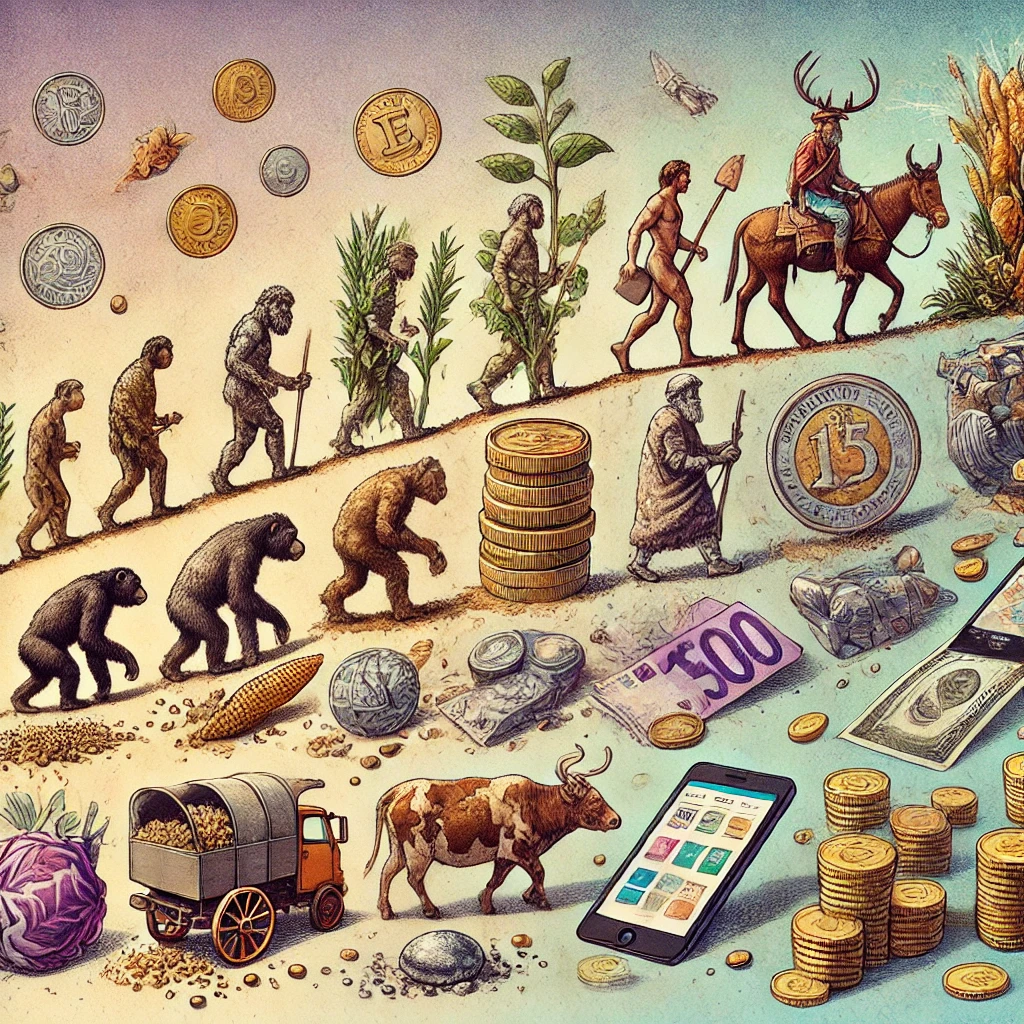The Origin and Development of Money

The Origin and Development of Money
The Evolution of Money:
To simplify trade and create a universally accepted exchange system, early civilizations developed various forms of money. In ancient India, commodities and animals were commonly used as mediums of exchange.
Since agriculture was central to the economy, farmers would trade their crops for animals like cows, horses, and buffaloes. These animals became a standard form of currency for bartering goods and services. In times of need, people could exchange these animals for other goods or even crops.
However, animals as currency had their limitations. Since animals are mortal, they could fall sick, age, or die, making them an unreliable store of wealth. Due to these challenges, minerals and stones gradually replaced animals as a more durable form of money. Over time, with the rise of imperial powers, coins became the dominant medium of exchange across kingdoms. The use of coins spread widely, though initially limited to certain regions and societies.
Democracy and Industrialization:
With the advancement of democracy and industrialization, the need for a more reliable and modern form of money grew stronger. Central governments began to issue standardized money that was widely accepted for the exchange of goods and services. This new currency system solved many of the earlier problems, such as the challenge of storing and transferring wealth. The development of the banking system further improved money’s role in securing and transferring wealth, making the process more efficient and safe.
